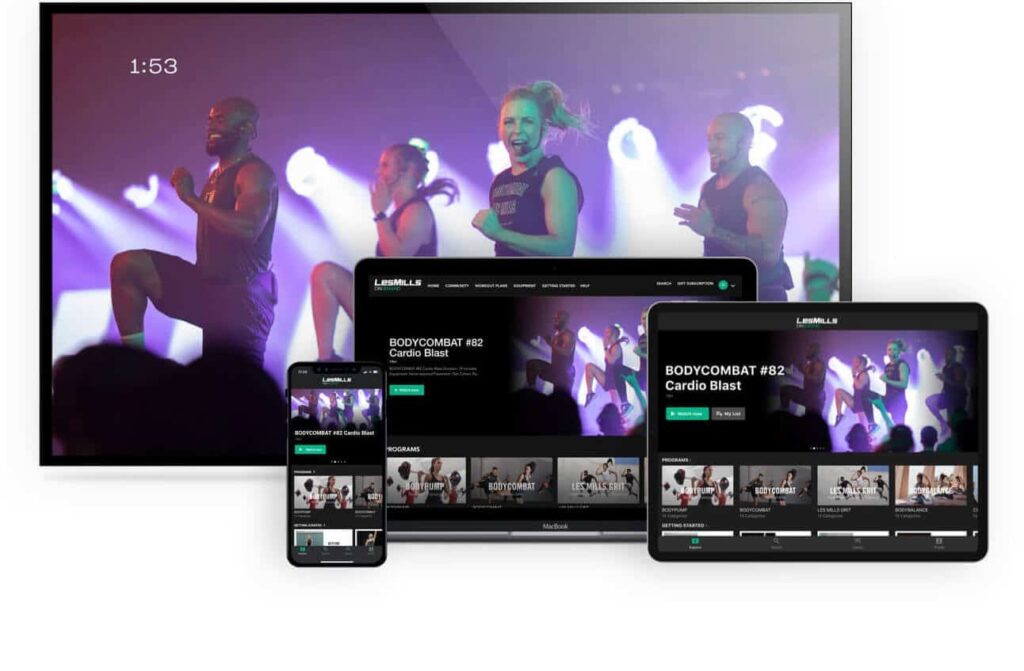In what is almost a redundant statement, due to the very obvious nature of it, technology has taken over every facet of the modern world. From the way we eat (ordering a takeaway or watching a YouTube cooking tutorial) to the way we purchase the very clothes on our backs (via H&M, Zalando etc.), technology is right there as an enabler. In fact, in 2020, global retail sales are projected to amount to around $26.tn dollars, with an estimated 1.9bn people worldwide purchasing goods (including food) or services online.
Go back just one year to 2019, and e-retail sales surpassed $3.5tn worldwide. The fact of the matter is, technology has made this possible and it will continue to drive these numbers to almost unimaginable levels. The really fascinating thing about this however, particularly in a year beset by lockdowns and restricted movement outdoors, is how many of these transactions were made from home and how much of that $3.5tn has been spent in the palm of our hands?

In all the talk of global markets and industry being disrupted and revolutionised by technology we often focus on those trillion dollar ones because they are the traditional ‘big hitter’ industries. Over the past decade however, one industry sector has seen incredible growth all over the world and technology (to no surprise) has seen that growth take on a whole new level. In 2019, the global fitness and health club industry exceeded $96bn. There are more than 201,000 health and fitness clubs worldwide and more than 174mn global members. It’s clear to see; the health and fitness space is not to be sniffed at. One of the biggest, if not the biggest, ways in which technology has redefined the fitness industry is through on-demand services. Like everything else in our lives, we want it and we want it now. But for Jean-Michel Fournier, CEO of Les Mills Media, it’s important to remember what people want with their fitness experiences before getting lost on working out how to provide that to them through technology.
“We are more and more connected,” he says from his home gym in San Francisco. “Connection in fitness is very important. Being able to be part of a community and believing in something bigger than you is way more motivating than exercising by yourself and not being able to share what you achieve or what you’re doing. It’s about trying to connect with people who have the same objective, or same experience or someone who can advise you. So that community is very important and with technology now you’re able to be engaged and supported by your community, anywhere, anytime.”
That sense of a shared community, through health and fitness, defines the very core of Les Mills. Headquartered in Auckland, New Zealand, Les Mills is on a mission to create a fitter planet not by making people work out but by helping people fall in love with fitness so that they want to work out.
Les Mills provides workouts that are licensed by 19,500 partners in 100 countries around the world and has a tribe of 135,000 certified instructors to deliver the likes of BODYPUMP, BODYCOMBAT and GRIT workouts to millions of members. With the future of fitness merging between physical and digital, the company has led the charge in delivering immersive training and workouts on demand. This is where Fournier, a fitness fanatic and a student of Silicon Valley, looks to continuously drive engagement with members and it starts with that sense of connectedness and love affair with fitness.
“Actually, I don’t really care about technology. Technology for me is an enabler. Technology’s here to help improve the life of our community,” he laughs. “It’s really my very first company where I’ve seen how we help people to live a better life. To feel better when they wake up in the morning, and do the exercise and fall in love with our classes, where people are doing body pump and body combat on a daily basis and they share their pictures, their achievements through the community. It’s so exciting when I see that and that’s what feeds me, honestly.”

The health and fitness space is notoriously costly and often seen as a luxury, pricing people out entirely. So surely technology and on demand services would simply follow suit? Fournier recognises this, recalling the unfortunate passing of his father over the past few years and how that had made him rethink the role of technology in fitness. “Before my father passed away, he told me that he wished he could go back and be in shape and feel proud of his physical fitness,” he says. “That really impacted me. It made me ask one question; how can we help people get better access to fitness services. The answer is through technology.”
Fournier believes that technology is the key to democratising fitness services, making it truly available to everyone. Les Mills offers all of its fitness programs and workouts, together with advice and FAQs, through a simple and easy to use mobile and tablet app. This app will capture all kinds of data from its members and their activity and feed it back to them in a way that is personalised to each user. While we are competitive by our very nature and we do crave the shared community that Fournier speaks of, we all have our own personal goals and our own achievements that we strive for. But how can an app provide personalised experiences for well over a million users all over the world? The answer is, again, technology. Specifically Artificial Intelligence and Machine Learning.
“The technology allows us to think about things that are perhaps within our subconscious that impact our exercise,” says Fournier. “When are we most motivated to exercise? How does our sleeping habits impact our performance? At what point during a day am I going to get the best results? These are all things that AI and Machine Learning will allow us to think about and understand better. It’s really opening everyone’s eyes and making that process of falling in love with fitness that little bit more seamless.”
Machine Learning, while not a new concept, is still in its infancy in terms of global implementation. Fournier believes that we are “at the beginning of a tsunami” when it comes to Machine Learning and that when it does become a norm, personalisation will come naturally. He compares the concept of personalisation in fitness to that of other streaming on-demand services like Netflix. Personalisation in those platforms can only stretch as far as presenting films that you like based on your activity, or personal lists you create. In fitness, the variables are so sparse and unique to each individual that a “one service to many” approach simply will not work.
“Technology in the fitness spaces creates a sense of accountability with both the community and the coaches” says Fournier. “You are starting to see more and more coaching platforms out there and we are doing some experimentation with this at Les Mills, where people have a coach in their pocket. Now they are connected with the coach and the coach is going to communicate directly and check on your performance. They look at the data and see that you’ve done the workout and congratulate you for it. Then you feel good about it.”

Fournier admits that it also works both ways, thanks to those extremely different variables; “Say you haven’t done it, the coach can ask you why. It’s because you’re tired, or you’ve hurt yourself. The coach can then work with you to adapt the workout. So that’s going to create this accountability and technology is going to help to create this connection between your data and your community. There’s going to be this golden triangle of information here.”
The benefits of technology are clear to see; the personalisation of the user experience comes directly from it, so Les Mills should just go ahead and throw all of its eggs into the technology basket right? Wrong. Les Mills, since the very beginning back in 1968, is a business built on the foundations of family and community. Right from the top with Phillip Mills himself, to his wife Jackie and children Diana and Les Mills Jr, there is a culture that looks at fitness services and exercises and marries that with technology that can spread that culture all over the world. The technology will never drive the business, the community will. This in itself brings an interesting challenge to the table, yes Les Mills wants to serve the world and help each and every one of us, but it’s also a business and a business will also be driven by revenue and bottom line results through innovation. “So how do you innovate? You need to be sure you have a good understanding of the mission,” says Fournier. “At the end of the day if there are people out there fleeting the next best tech thing in fitness and they’re being more successful, good for them. At the end of the day the mission for Les Mills is not to conquer the world, or to be a dominant company. At the end of the day, we are here to really help people.”
Les Mills is driven by people, for people. That is abundantly clear. Personalisation is one challenge that the company faces and for the most part succeeds in, but what about the actual user experience? How easy is it for someone to log in to the CMS, search through the copious amounts of workouts and then stream those workouts in a truly seamless experience? Les Mills, like many businesses right now, works to provide an omnichannel experience for users so they can indeed access it anytime and anywhere. But omnichannel is a word that has fallen into the trappings of many other keywords in technology right now. How does the company look to move away from simply following a trend and offer a true omnichannel experience?
“It’s hard,” laughs Fournier. “Not everybody has an internet connection at 100 or 200 megabytes. Not everyone has the same bandwidth and capabilities to stream. These days there are a number of successful platforms out in the world, which makes it easier. Having streaming capabilities and adding a strong architecture while working with the best CMS platform out there is critical. Around four years ago, coinciding with when I came into the business, we laid down a very strong and robust platform that can support millions of recurrences and millions of subscribers, to be sure we can provide the quality that our users need regardless of their situation.”
The lines between health and fitness and digital are increasingly blurring and reaching a point as to where we may not be able to think about exercise and fitness without a livestream, at home experience. As with any technological shift, there is also a generational shift running alongside it. It isn’t simply a case of older generations of gym users and fitness professionals suddenly pivoting to digital or being alienated as the world around them becomes an increasingly digital one. As we have seen in many other industries, it is not that black and white and it comes as no surprise that this is something that Les Mills understands more than most.
“If someone wants to enjoy our content on an app, they can. If they want to enjoy our content in a live streaming class, they can. If they want to enjoy our content in a live class with a real instructor they can do it as well,” says Fournier. “At the end of the day we are a content provider. What we do is create amazing fitness choreography linked to music and we do so in a way that is truly accessible to all and for all.”

In 2020, the world was forced to stand still as it became gripped by the coronavirus pandemic. With lockdowns and restrictions put in place to protect the lives of people the world over, this closed a lot of doors for the likes of restaurants, retail stores and yes; gyms and fitness centres. One could be forgiven for thinking that Les Mills, pioneers in the streaming on demand space for fitness, were well prepared for this and suffered minimal impact from this. “Our customers are those fitness clubs and the community centres that provide Les Mills classes to their communities,” reflects Fournier. “So we were hurt there. Everybody moved to digital, which was great and thanks to the great work we did in previous years in building a robust platform we were able to absorb the millions of recurrences into our platform and keep the right level of stability.”
For Les Mills, it has always been about the community and when that community is forced to stay indoors and to stay away from the physical connectedness, the focus changes slightly. Connected community has always been a cornerstone of Les Mills, but in these difficult times the company changed tact and became much more connected to its community than ever before. “I’m very proud of the Les Mills team because we really focused on what was important. The focus was really on responding to the customer needs,” beams Fournier.
“People wanted more connection, so we generated some live streaming classes. They wanted to talk with their instructors live, so we did a lot of live Q&As that were pretty amazing.”
Fournier points to one example where the Program Director, Glen Ostergaard, presented a live streaming class to over 25,000 people worldwide. Just a few short years ago, this would have been unprecedented even for Les Mills and yet here it was, leading one of the largest live streaming fitness classes in the world and exceeding all expectations.
Elsewhere, in the absence of being present in classes and under the watchful eye of a trainer, Les Mills needed to think about how it could leverage the 140,000+ fitness instructors around the world and enable them to connect with the people. “These people aren’t just the faces you see on our apps and workouts, they are the community who run the classes in centres and in gyms,” says Fournier. “They understand fitness, they understand health and wellness and they are a part of the whole community so we started to connect and to create a networking effect, connecting the expert to the community that has a need. It has been quite amazing to see this level of engagement and communication with instructors and seeing how they can exercise better.”
Right, the future and what it will look like for many remains uncertain. The last year has taught us to rethink our perceptions of how industries can and should operate and has forced a lot of businesses to rethink their operations. In some cases, this has created great opportunities and change for good. For fitness and exercise, which as we know was already going through it’s own evolution prior to 2020, this evolution and convergence of fitness and technology will continue at an incredible pace. As we talk of new norms, what does that actually mean for Les Mills? Can it ever go back to what it was before? “Some people enjoy exercising from home. Some people are enjoying working out more outdoors and hiking or going to the park and doing their exercise routines there. And you will always have people missing their fitness club,” says Fournier. “Human nature will always go back to convenience and people will want to go back to the convenience of a fitness club or a class.”
“I firmly believe that club operators need to evolve and they need to focus on their members.There are an increasing amount of members who are outside the club as we’ve discussed. You see the evolution right now, more and more are embracing digital, creating some challenges and motivating people to exercise outside of the club. It’s a pretty big shift and one that’s going to continue, so we have to continue to look at our offering and how we can continue to serve our community in the best way possible.”











